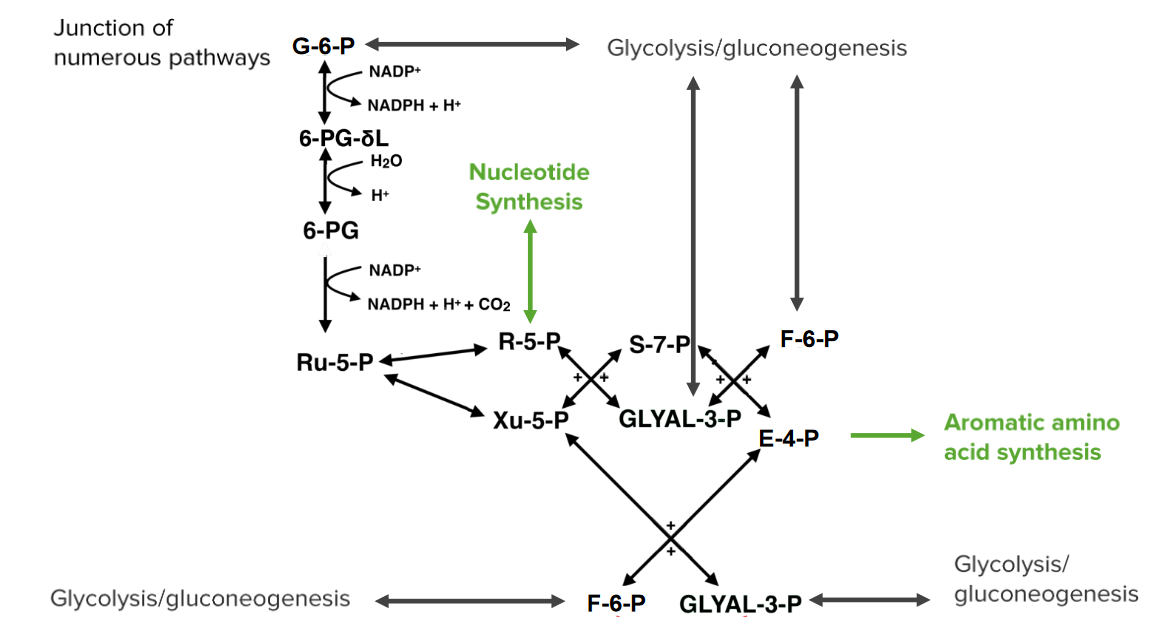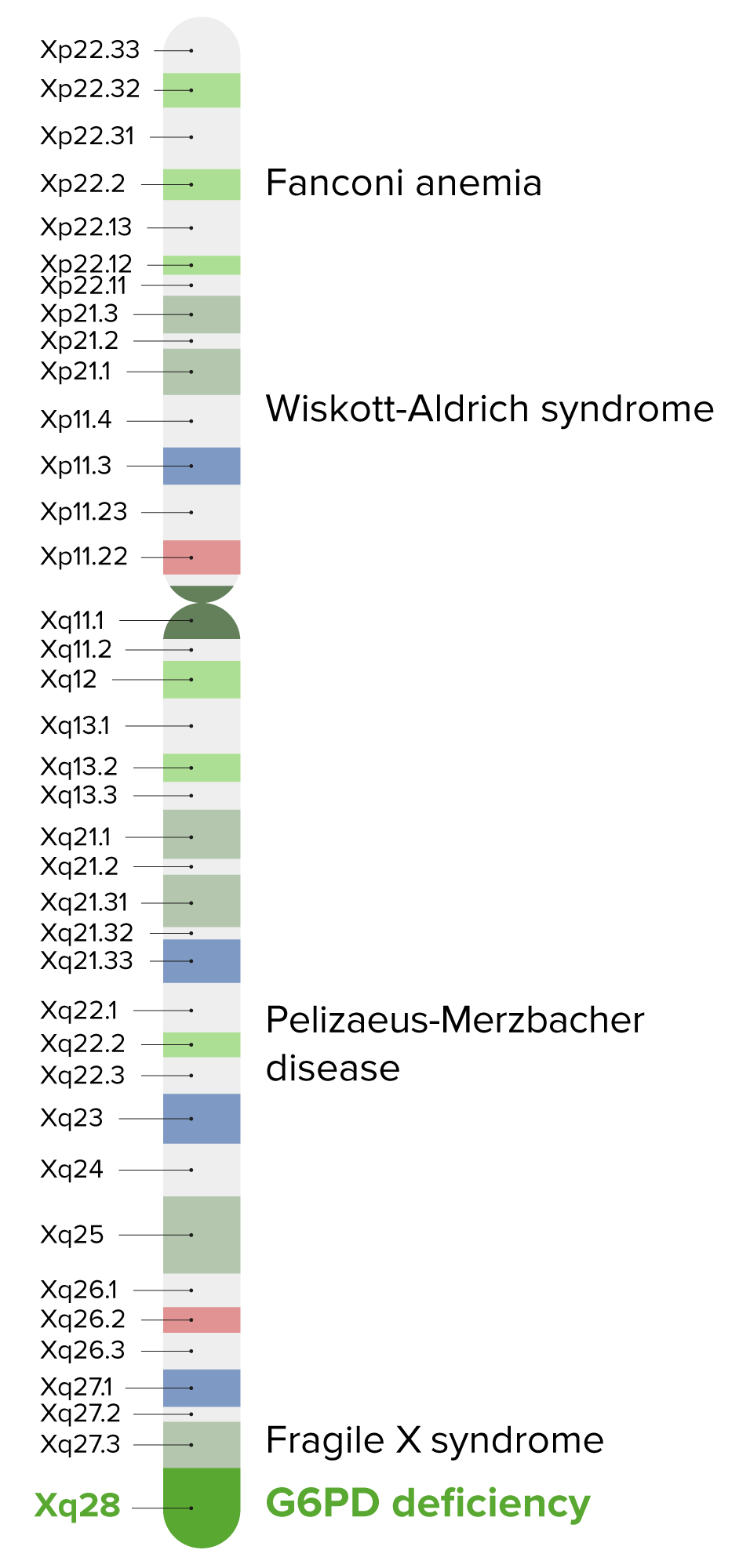Playlist
Show Playlist
Hide Playlist
The Pentose Phosphate Pathway: Introduction
-
Slides PentosePhosphatePathway Biochemistry.pdf
-
Reference List Biochemistry.pdf
-
Download Lecture Overview
00:00 Stoffwechselwegen werden oft auch mit Straßen verglichen, wie sie auf Straßenkarten dargestellt werden. 00:05 Wenn das auch beim Pentosephosphat-Weg der Fall ist, wird es eine der vernetzteren Straßen sein, die wir innerhalb von Zellen finden können. 00:12 Der Pentosephosphat-Weg ist ein sehr wichtiger Bereich des Kohlenhydratstoffwechsels mit mehreren Ausgangs- und Endpunkten, wie wir sehen werden. 00:20 Zwei der Schritte des Pentosephosphatweges sind oxidativer Natur und synthetisieren etwa 60% des NADPHs der Zellen. 00:29 NADPH ist natürlich notwendig für die Herstellung größeren und wichtigen Molekülen. 00:33 Der Pentosephosphat-Weg erzeugt außerdem Zwischenprodukte für andere Stoffwechselwege. 00:38 Sehr wichtig ist dabei Ribose-5-Phosphat, das für die Herstellung von Nukleotiden benötigt wird. 00:43 Erythrose-4-Phosphat ist notwendig für die Bildung von aromatischen Aminosäuren und den Stoffwechsel der aromatischen Aminosäuren. 00:49 NADPH ist sehr wichtig für die Synthese von Fettsäuren und anderen Molekülen, die die Zelle benötigt. 00:55 NADPH ist auch notwendig, um das wichtige Antioxidans Glutathion in reduzierter Form zu halten und die Zelle vor reaktiven Sauerstoffspezies zu schützen. 01:04 Wir finden also zahlreiche Zwischenprodukte der Glykolyse und Glukoneogenese und das sorgt für einen Großteil der Flexibilität des Stoffwechselweges, wie wir sehen werden. 01:14 Eines der Enzyme des Pentose-Phosphat-Weges wird auch im Calvin-Zyklus verwendet und ist als Transketolase bekannt. 01:21 Eine wichtige Erkenntnis über den dem Pentosephosphatweg ist, dass er, anders als man gemeinhin denkt, nicht wirklich einen Start- oder Endpunkt hat. 01:31 Du wirst zwar Endpunkte sehen, aber diese Endpunkte sind mit anderen Stoffwechselwegen verbunden und es gibt mehrere Eintrittsstellen in den Pfad. 01:38 Wir werden uns einige Beispiele dafür ansehen. 01:40 Der Pentosephosphat-Weg findet ausschließlich im Zytoplasma der Zellen statt. 01:45 Die zehn Zwischenprodukte des Pentosephosphatwegs Weges sind in dieser Abbildung dargestellt und ich habe sie in verschiedene Gruppen, basierend auf gemeinsamen Merkmalen, eingeteilt. 01:53 In der erste Gruppe sind drei Zwischenprodukte aus dem Weg der Glykolyse: Glukose-6-Phosphat, Fruktose-6-Phosphat und Glycerinaldehyd-3-Phosphat. 02:02 Die nächsten beiden Zwischenprodukte sind wichtig für andere Stoffwechselwege: Ribose-5-Phosphat für den Nukleotid-Stoffwechsel und Erythrose-4-Phosphat zur Herstellung von aromatischen Aminosäuren. 02:12 Die nächsten drei sind eher unübliche und seltene Zucker, die außerhalb des Pentosephosphatwegs kaum zu finden sind: Ribulose-5-Phosphat, Xylulose-5-Phosphat und Sedoheptulose-7-Phosphat. 02:24 Und die letzten beiden sind Zuckerderivate, die fast ausschließlich auf dem Pentosephosphatweg zu finden.
About the Lecture
The lecture The Pentose Phosphate Pathway: Introduction by Kevin Ahern, PhD is from the course Carbohydrate Metabolism.
Included Quiz Questions
Which statement regarding the pentose phosphate pathway is TRUE?
- It has multiple points of entry and endpoints connected to other pathways.
- It has multiple inputs but only 1 output.
- It participates in the synthesis of NADP.
- It is involved in the oxidation of fatty acids.
- It is regulated by the products of the citric acid cycle.
Which statement regarding the 10 molecules in the pentose phosphate pathway is true?
- They all are sugars or sugar derivatives.
- They all are intermediates in glycolysis.
- They all are aldoses.
- They are all fatty acids.
- They are all compound proteins.
Customer reviews
5,0 of 5 stars
| 5 Stars |
|
5 |
| 4 Stars |
|
0 |
| 3 Stars |
|
0 |
| 2 Stars |
|
0 |
| 1 Star |
|
0 |





